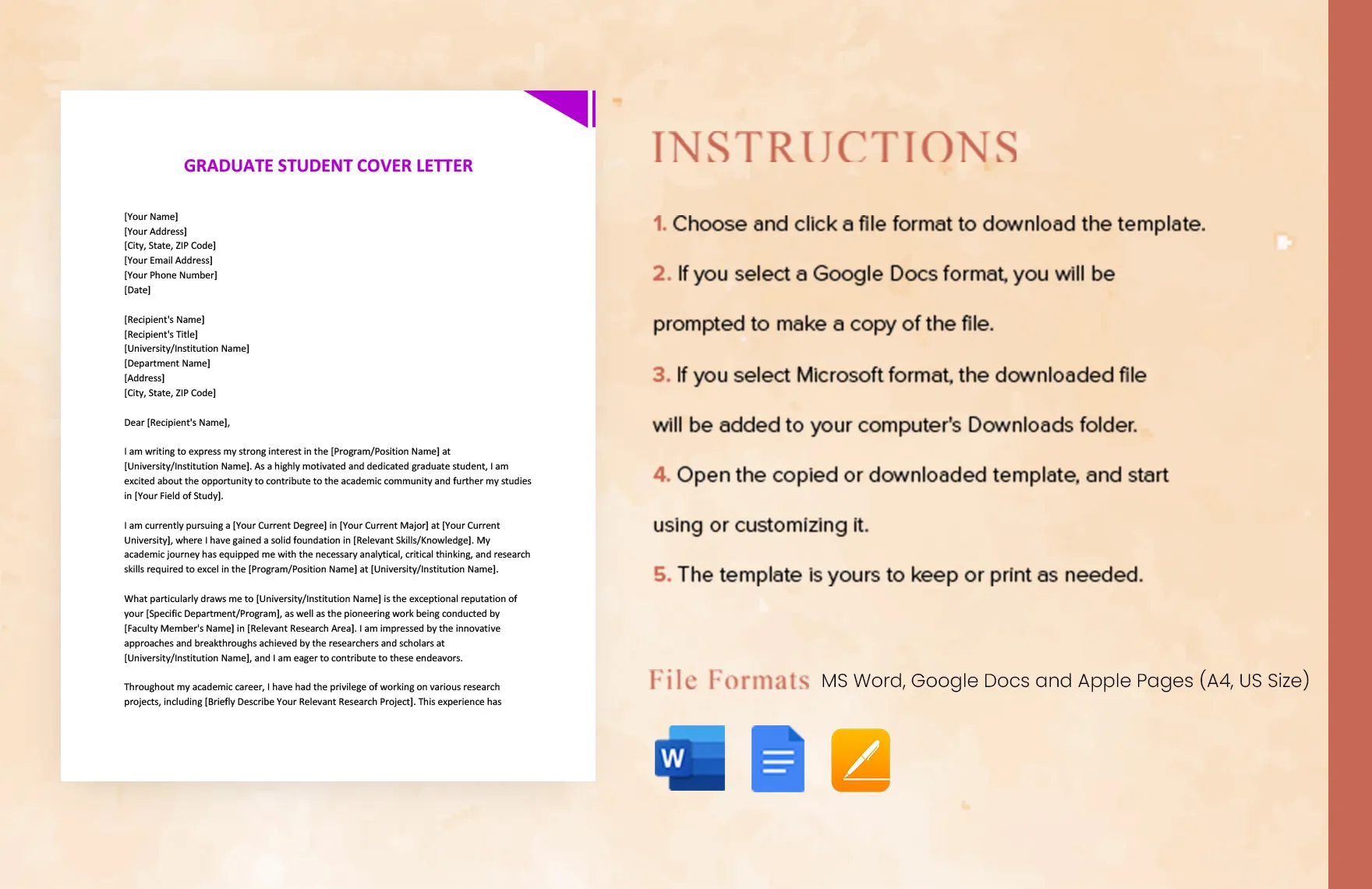Cover Letter Template for Grad School Success
Navigating the graduate school application process can be daunting, but a well-crafted cover letter is a crucial tool in your arsenal. This guide provides a comprehensive cover letter template tailored for graduate school applications, offering insights, tips, and examples to help you stand out. Whether you are applying to a master’s program, a Ph.D. program, or any other graduate-level opportunity, this template will guide you through the process of creating a compelling cover letter that showcases your potential and aligns with the program’s requirements.
Understanding the Importance of a Cover Letter
The cover letter is more than just a formality; it’s your first opportunity to make a strong impression and to persuade the admissions committee that you are a worthy candidate. Unlike your resume or transcript, the cover letter allows you to tell your story, explain your motivations, and articulate your goals in a way that highlights your personality and aspirations. It provides context for your application, helping the admissions committee understand your experiences and why you are a good fit for their program. Remember to research the specific program and tailor your cover letter to match their values.
Why a Cover Letter Matters?
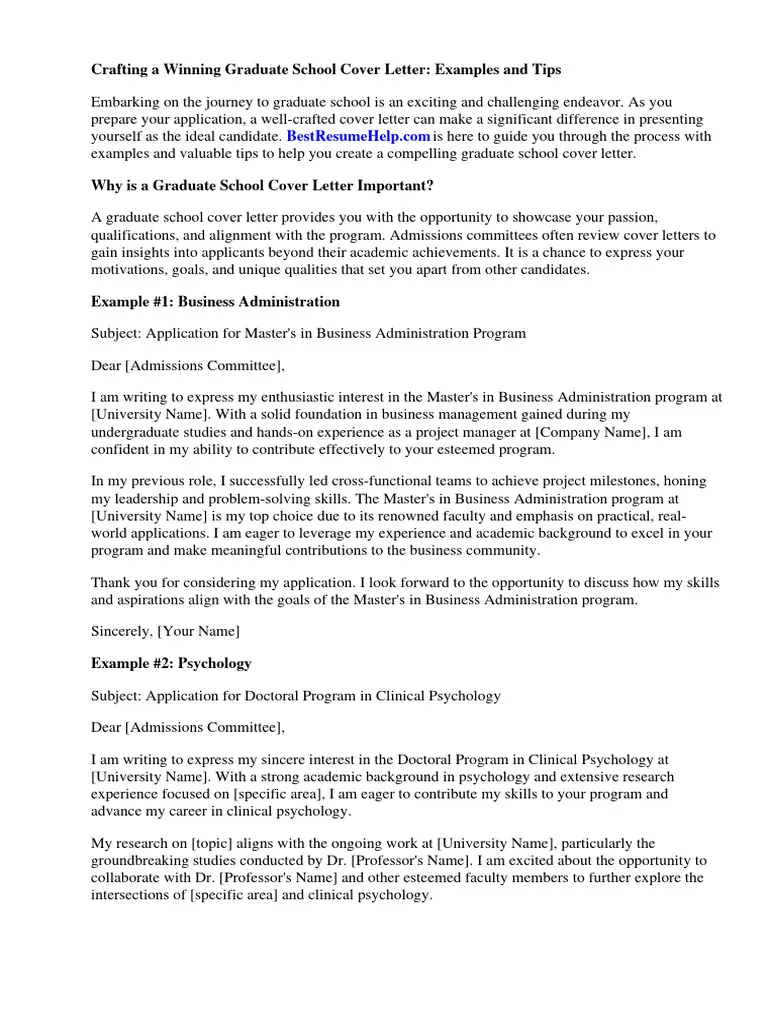
A cover letter provides a platform to elaborate on your experiences and aspirations. It offers a chance to showcase your personality and writing skills. Moreover, it shows that you have taken the initiative to connect with the program. It lets you explain gaps in your academic or professional record. It differentiates you from other applicants.
What Makes a Great Cover Letter?
A great cover letter is concise, compelling, and tailored to the specific program. It should clearly articulate your interest in the program, highlight relevant skills and experiences, and explain how your goals align with the program’s objectives. The best cover letters show a deep understanding of the program’s values and a genuine passion for the field of study. They are well-written, free of errors, and reflect your unique strengths and motivations. Use the correct tone, language and formatting.
Key Components of a Winning Cover Letter
Contact Information and Date
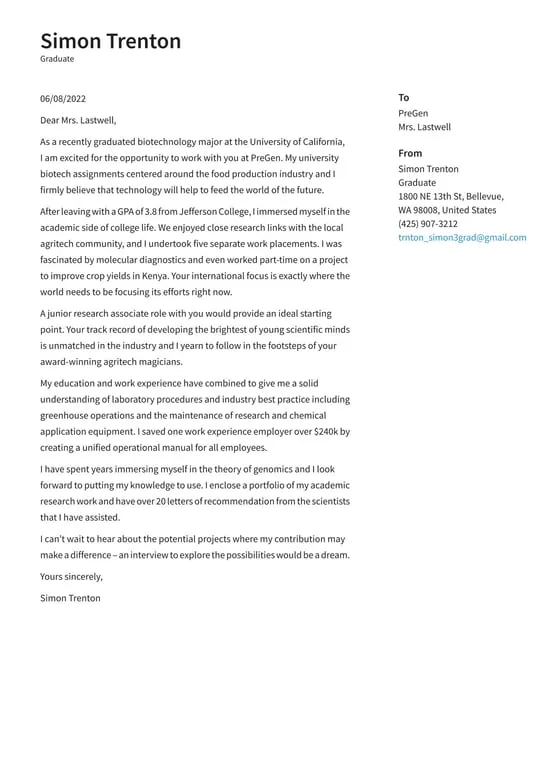
Begin your cover letter with your contact information and the date. This includes your full name, address, phone number, and email address. Ensure the information is accurate and professional. Place this information in the top left or right corner of the document. Following this, include the date, typically aligned to the left or right, depending on your preferred style.
Applicant’s Name and Address
Include your full name, address, phone number, and professional email address. Make sure your email address is appropriate for professional communication. This section is crucial for the recipient to contact you. Double-check all details for accuracy to avoid any miscommunication or delays in the application process.
University’s Name and Address
Below your information, include the name of the university, the department (if applicable), and the full address. Address the letter to the specific person, like the admissions committee or the program director. Proper formatting and accuracy in the recipient’s address show attention to detail, which reflects positively on your application. Ensure that the addresses are up-to-date by checking the university’s official website.
Salutation
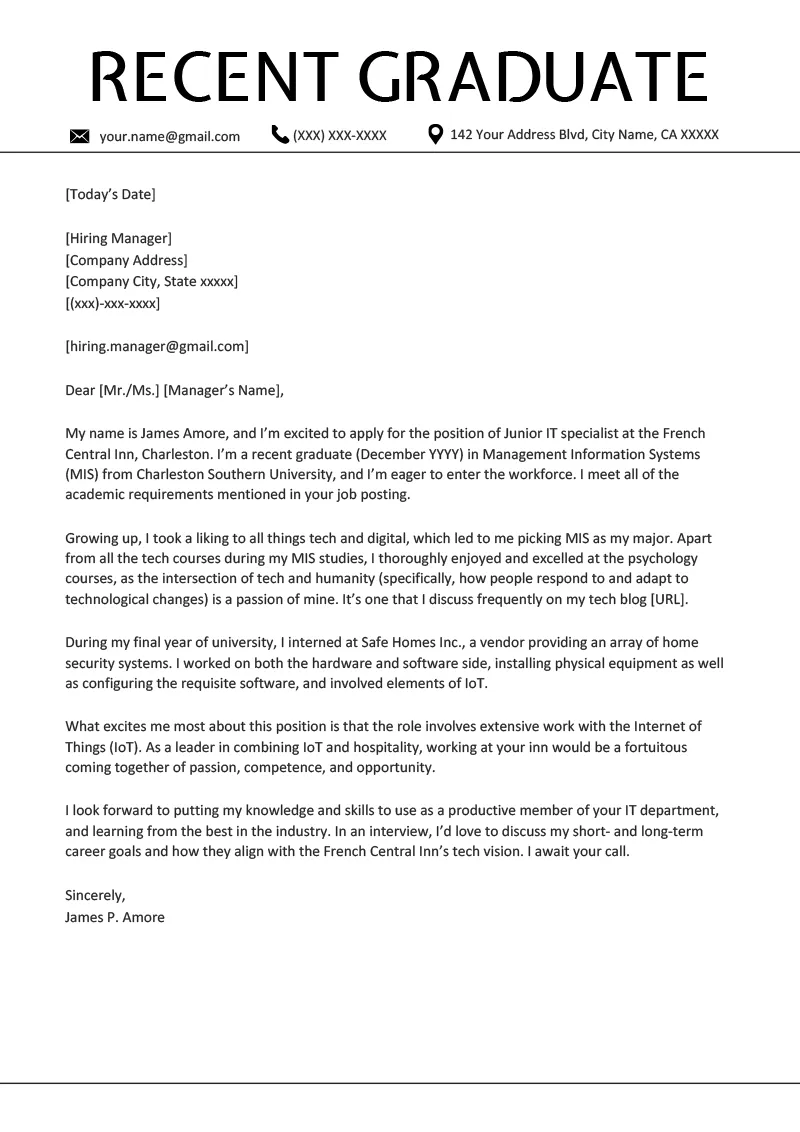
The salutation sets the tone of your letter. Use a formal salutation like ‘Dear Dr. [Last Name]’ or ‘Dear Admissions Committee’. If you don’t know the name, use ‘Dear Admissions Committee’ or ‘To Whom It May Concern’. Always ensure that you use a professional and respectful tone, reflecting your seriousness about the application process. Personalizing the salutation shows you’ve done your research and are serious about the opportunity.
How to Address the Letter
When addressing your cover letter, always try to find the name of the person reviewing applications. Use professional titles like ‘Dr.’ or ‘Professor’ if known. If you’re unsure, research the department’s website or contact the admissions office. Avoid generic salutations like ‘To Whom It May Concern’ if possible, as they appear impersonal. A personalized salutation shows that you have taken the time to research and understand the program and its requirements, which can significantly improve the impression you make on the admissions committee.
Body Paragraph 1 Introduction and Purpose
The first paragraph is your opportunity to grab the reader’s attention and clearly state your purpose. State the specific program you’re applying for and where you found out about it. Show your enthusiasm for the program and briefly mention why you’re interested in it. It’s your chance to set the tone for the rest of your letter and to create a positive initial impression.
Expressing Your Interest
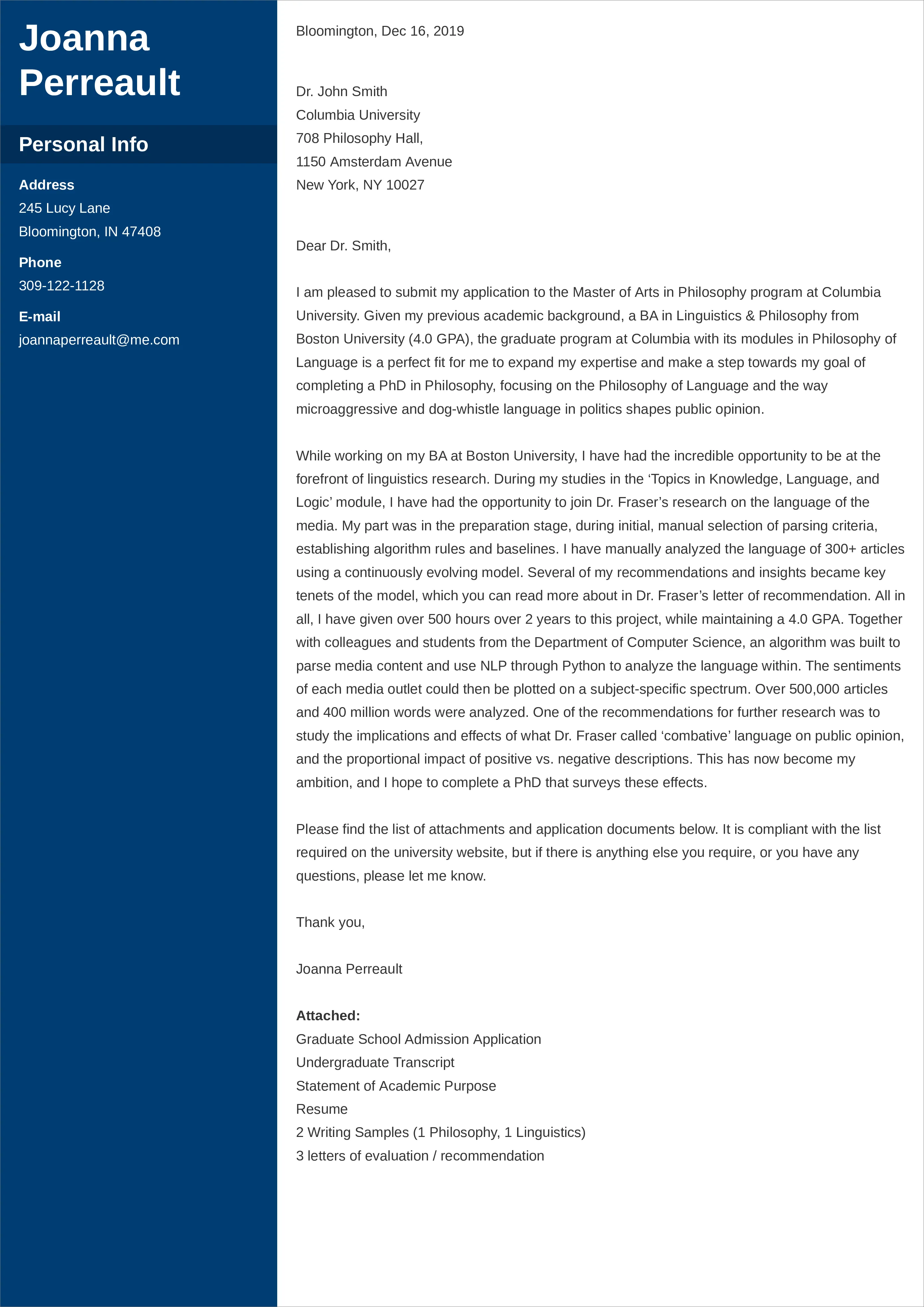
Clearly express your interest in the graduate program. Be specific about what attracts you to the program, whether it’s the research opportunities, the faculty, or the curriculum. Highlight what aspects of the program resonate with your academic and professional goals. Demonstrate your enthusiasm to show you’re genuinely interested in joining the program. Your passion can make you stand out from other applicants.
Highlighting Your Qualifications
In this initial paragraph, briefly mention your key qualifications that make you a strong candidate. Focus on the most relevant skills and experiences. Show how your previous education, research, or professional background aligns with the program’s objectives. Create a bridge from your current situation to the graduate program, which highlights your suitability for the next stage of your academic or professional journey. Tailor this section to the specific requirements of the program you are applying to.
Body Paragraph 2 Showcasing Your Skills and Experiences
The second paragraph should delve deeper into your qualifications. Discuss your relevant experiences, skills, and achievements in detail. Provide concrete examples of your accomplishments, and quantify them whenever possible. This paragraph is the meat of your cover letter, where you demonstrate your capabilities and show that you’re a strong fit for the program.
Relevant Experiences and Achievements
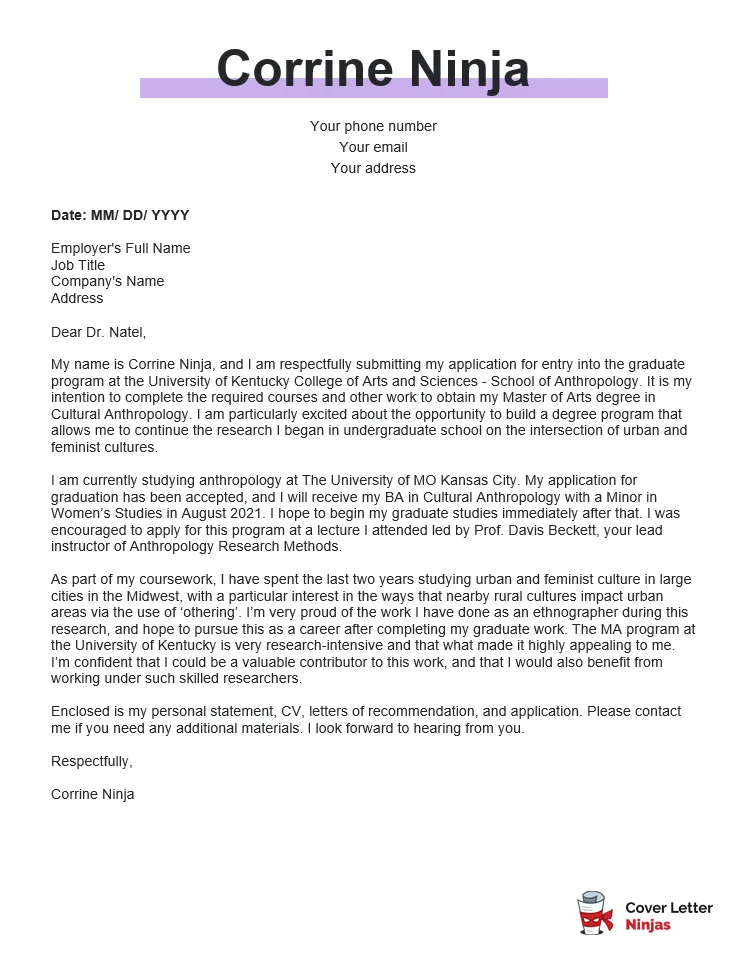
Focus on experiences that align with the program’s requirements and your future goals. Highlight any research projects, internships, or professional roles. Describe your responsibilities, the skills you developed, and the outcomes you achieved. Emphasize experiences that demonstrate your ability to succeed in graduate-level studies. Tailor the experiences to the specific program; this demonstrates that you’ve done your research and know what they’re looking for.
Quantifying Your Accomplishments
Whenever possible, quantify your accomplishments with numbers or data. Use metrics to demonstrate the impact of your work, such as the number of projects managed, the percentage of improvement achieved, or the amount of funding secured. This adds credibility to your claims and provides tangible evidence of your abilities. This demonstrates your ability to succeed in graduate-level studies.
Body Paragraph 3 Connecting Your Goals
The third paragraph should focus on your goals and how the program fits into your future aspirations. Explain your long-term career goals and how the graduate program will help you achieve them. Show how the program’s specific offerings, faculty, and research opportunities align with your goals. This demonstrates that you have a clear vision for your future and a plan for how this program will help you get there.
Aligning with the Program and University
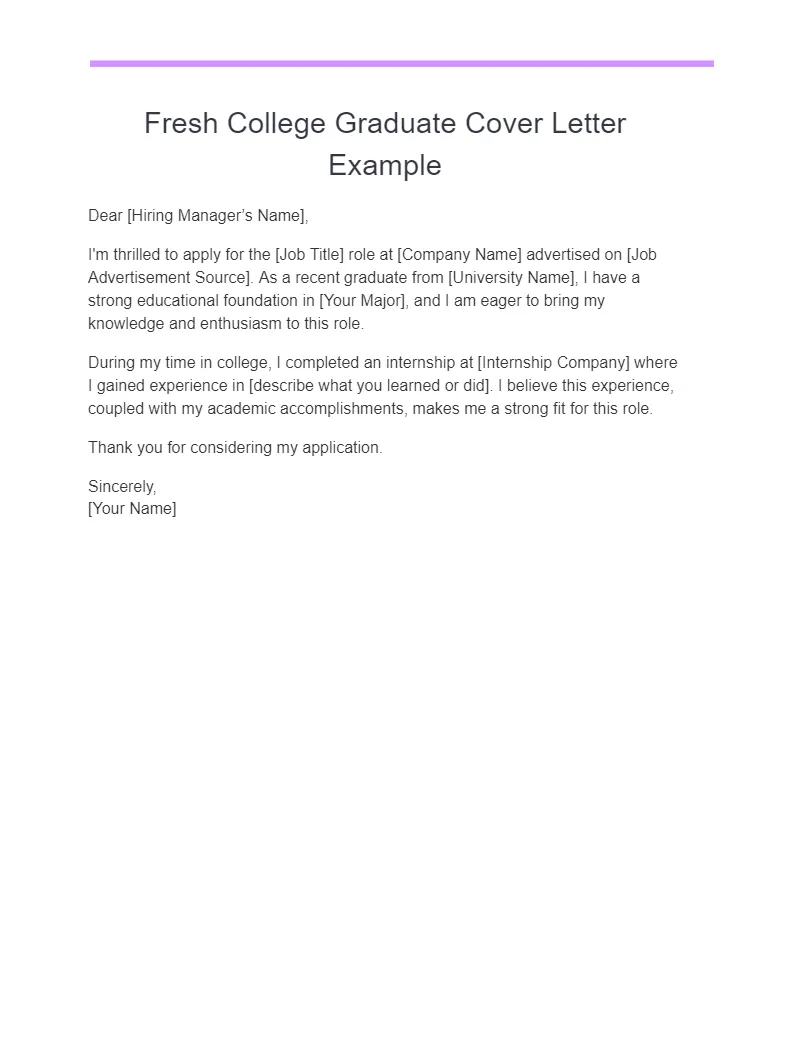
Demonstrate that you have researched the program and understand its mission, values, and research focus. Explain why this program, specifically, is the right fit for you. Mention specific faculty members whose research interests you and the specific courses you’re eager to take. By demonstrating that you align with the program, you show that you are serious about the opportunity and have taken the time to learn about it.
Expressing Enthusiasm for the Future
Conclude this section by expressing your excitement about the opportunity to contribute to the program. Reiterate your commitment to academic or professional excellence and your eagerness to learn and grow. Clearly show that you’re looking forward to the challenges and opportunities that come with graduate studies and how you can contribute.
Closing
Your closing paragraph should be concise and professional, reiterating your interest and expressing gratitude for their time and consideration.
Formal Closing and Signature
Use a formal closing like ‘Sincerely’ or ‘Respectfully’. Follow this with your typed name. If submitting a hard copy, leave space for your signature above your typed name. Always ensure the tone is respectful and professional. A strong closing leaves a positive final impression on the admissions committee, reflecting your professionalism.
Additional Information
This section provides additional tips for crafting a stellar cover letter. It emphasizes formatting, proofreading, and customization to maximize your chances of success.
Formatting Tips
Pay attention to formatting to make your cover letter visually appealing and easy to read. Use a professional font, such as Times New Roman, Arial, or Calibri, in a size between 10 and 12 points. Maintain consistent margins (1 inch on all sides) and use single or 1.15 line spacing. Ensure your letter is well-organized with clear paragraphs and headings. Proper formatting reflects your attention to detail and professionalism.
Font and Margin Guidelines
Choose a readable font, such as Times New Roman, Arial, or Calibri. The font size should be between 10 and 12 points for optimal readability. Set margins to 1 inch on all sides for a clean, professional look. Proper font and margins contribute to a professional appearance and improve readability.
Proofreading and Editing
Proofread your cover letter carefully for any grammatical errors, spelling mistakes, or typos. Read it aloud to catch any awkward phrasing or inconsistencies. Ask a friend, family member, or career advisor to review your letter for feedback. Thorough proofreading ensures your cover letter is polished and reflects your attention to detail and your ability to communicate effectively.
Common Mistakes to Avoid
Avoid generic cover letters that are not tailored to the specific program. Do not simply repeat information from your resume. Avoid errors in grammar, spelling, and punctuation. Do not exceed the recommended length (usually one page). Avoid negativity, jargon, or overly casual language. Do not focus on what you want, but rather on what you can contribute to the program. Addressing these common mistakes will help you create a stronger and more effective cover letter.
Template Examples and Customization
This section includes template examples that can be customized to suit various programs and provides guidance on how to tailor your cover letter to different application requirements.
General Template Structure
Provide a general template structure, outlining the typical sections and their order. Include contact information, salutation, introduction (purpose), body paragraphs (skills, experiences, goals), and closing. This structure provides a basic framework. Modify the template to showcase your unique skills, experiences, and academic goals.
Customizing for Different Programs
The core is to customize the template to suit different programs and their specific requirements. Tailor the template to the program’s mission, values, and research focus. Highlight the specific skills and experiences that are most relevant to the program. Mention faculty members whose research aligns with your interests and goals. Modifying your cover letter to the program shows that you have done your research and are genuinely interested in attending their program. Tailoring each application increases your chances of getting accepted.
Where to Find Template
You can find cover letter templates from various online resources, university career services, and professional writing services. Look for templates that are specifically designed for graduate school applications. Use these templates as a starting point, and always customize them to reflect your unique qualifications, experiences, and the specific requirements of the program you are applying to. Ensure the template is aligned with your career goals.
